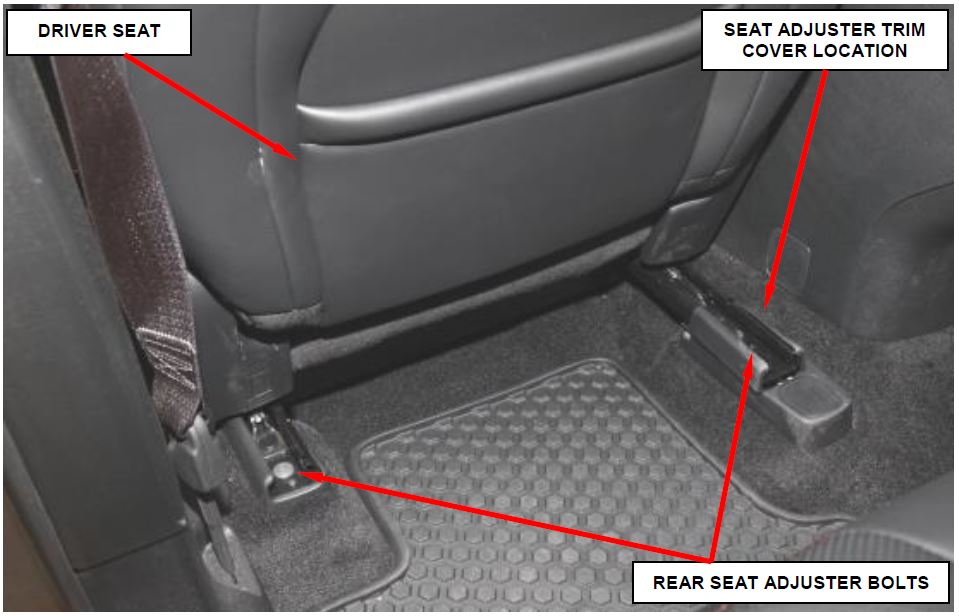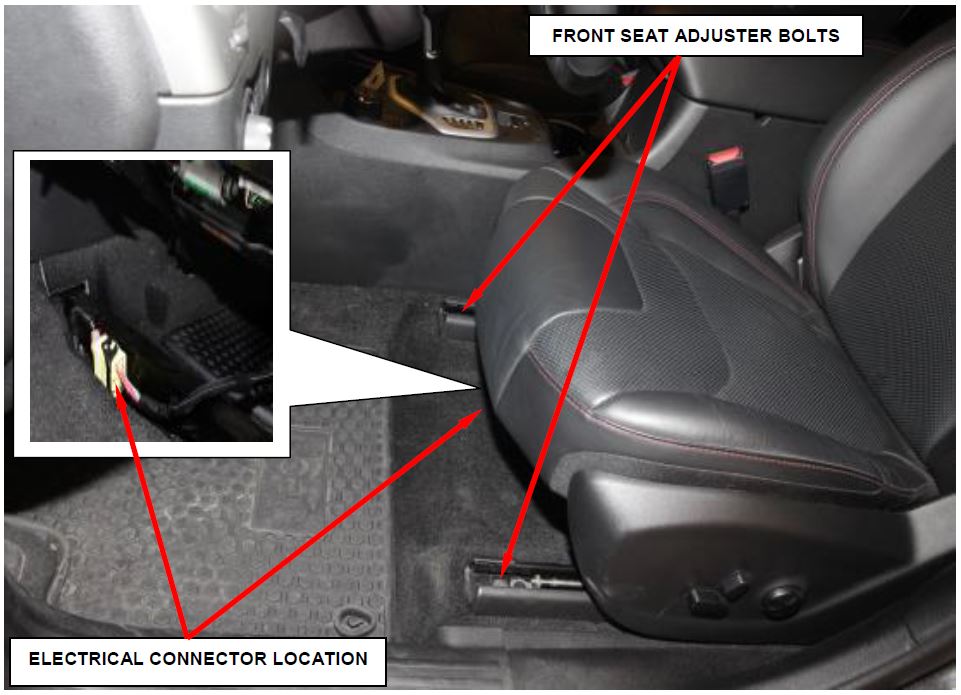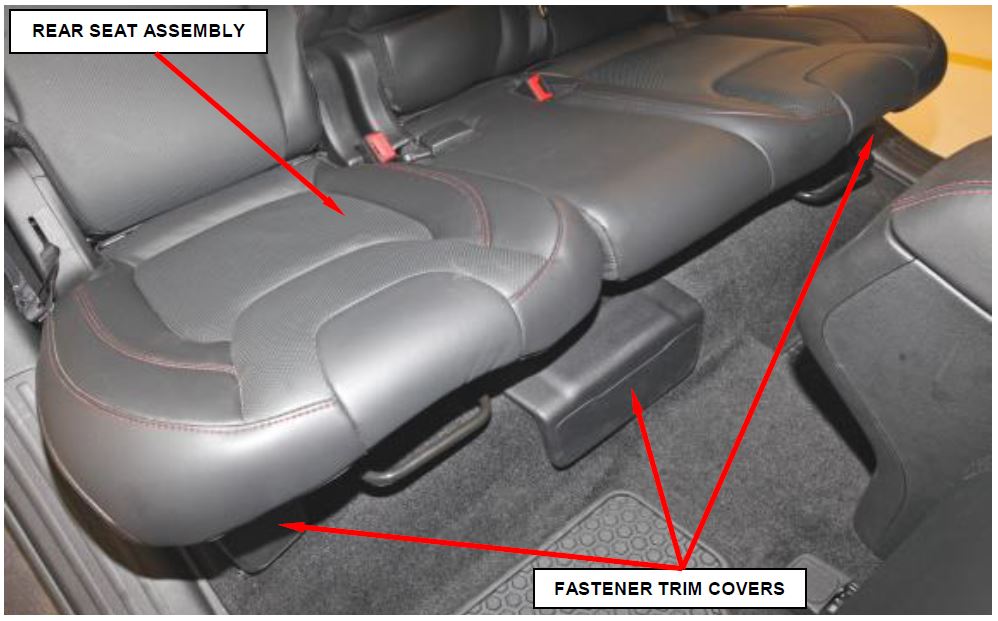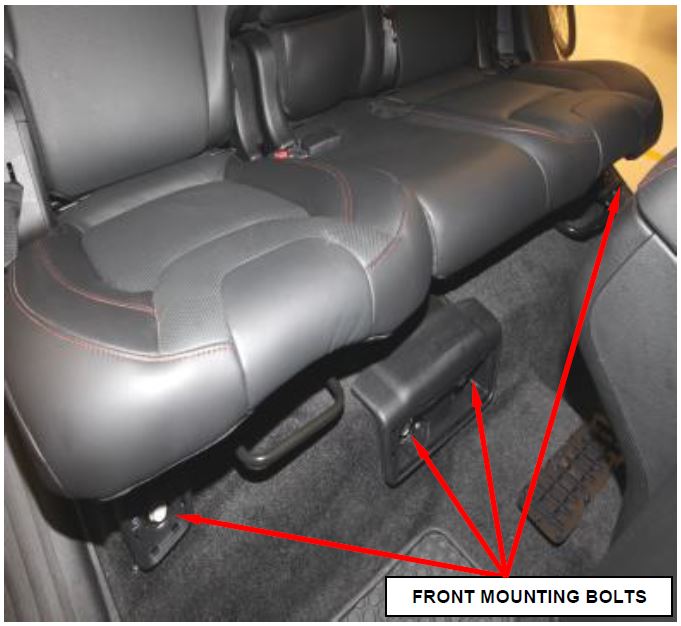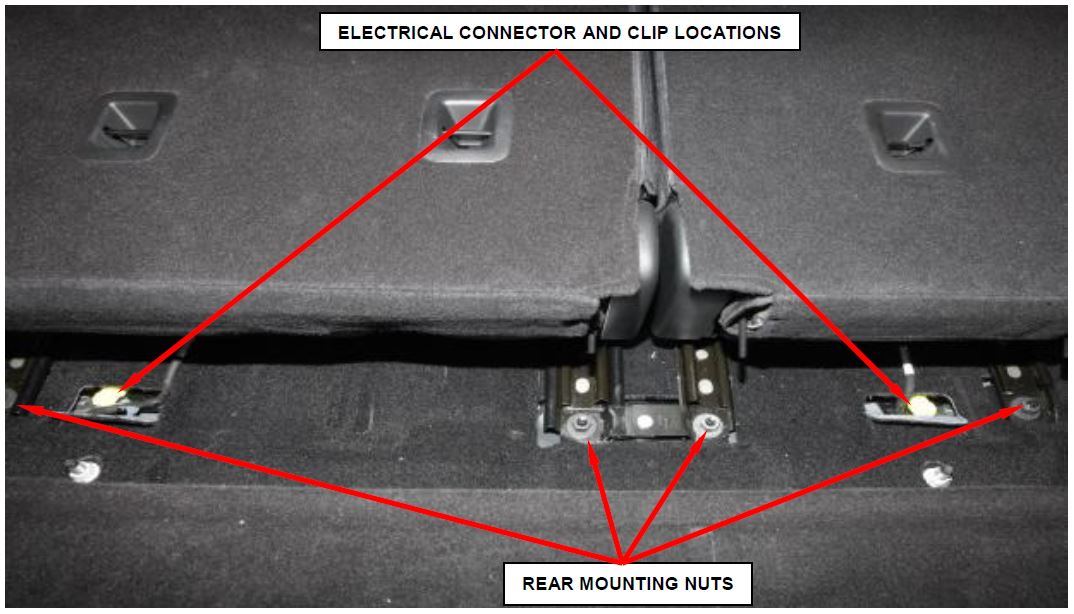| “This site contains affiliate links for which OEMDTC may be compensated” |
NHTSA Campaign Number: 16V590
Component(s): SEATS
Potential Number of Units Affected: 1,824
Manufacturer: Chrysler (FCA US LLC)
(FCA US LLC)
SUMMARY:
Chrysler (FCA US LLC) is recalling certain model year 2014-2016 Jeep
(FCA US LLC) is recalling certain model year 2014-2016 Jeep Cherokee vehicles manufactured July 29, 2013, to February 5, 2016.
Cherokee vehicles manufactured July 29, 2013, to February 5, 2016.
The seat fasteners on the first or second row seats may not have been tightened to the proper torque specification.
CONSEQUENCE:
Loose fasteners may allow the seats to move, increasing the risk of injury to the seat occupants in the event of a crash.
REMEDY:
Chrysler will notify owners, and dealers will replace the seats or seat sets, free of charge.
will notify owners, and dealers will replace the seats or seat sets, free of charge.
The recall is expected to begin on September 23, 2016.
Owners may contact Chrysler customer service at 1-800-853-1403.
customer service at 1-800-853-1403.
Chrysler ’s number for this recall S63.
’s number for this recall S63.
NOTES:
Owners may also contact the National Highway Traffic Safety Administration Vehicle Safety Hotline at 1-888-327-4236 (TTY 1-800-424-9153), or go to www.safercar.gov.
Check if your Vehicle has a Recall
Revised October 2016
Dealer Service Instructions for:
Safety Recall S63 / NHTSA 16V-590 Seat Fastener Torque
NOTE: Ordering instructions have been updated in this recall.
Models
| 2014-2016 | (KL) | Jeep Cherokee Cherokee |
NOTE: This recall applies only to the above vehicles built from July 26, 2013 through February 05, 2016 (MDH 072609 through 020508).
| IMPORTANT: Some of the involved vehicles may be in dealer new vehicle inventory. Federal law requires you to complete this recall service on these vehicles before retail delivery. Dealers should also consider this requirement to apply to used vehicle inventory and should perform this recall on vehicles in for service. Involved vehicles can be determined by using the VIP inquiry process. |
Subject
The seat(s) on about 1,800 of the above vehicles may have been manufactured with a seat fastener that was not tightened to the proper torque specification. A loose seat fastener could increase the risk of injury to seat occupants during a crash event.
Repair
The affected seat assembly(s) must be replaced.
Parts Information
Due to various unique VIN to seat-set-assemblies that are offered by FCA and covered by Recall Campaign S63, the following steps will be needed to determine the correct part to order.
- FCA has instructed the customer to contact the dealer to make an appointment and provide their VIN.
- The dealership should contact the manufacturer, Adient, and provide the VIN.
- By E-mail (Preferred method): recallS63@adient.com or
- By Phone: 1- 844-533-0760.
*3. Adient will validate the vehicle involved within the recall and respond within approximately 24 hours with the correct part number for ordering.
*4. The dealership must then place the order for the specified part through normal means using an “E” order type. If an “S” order type is placed, it will count against your special handling allowance. Shipment will arrive directly from the supplier (SSD), at no cost to the dealership, within approximately 48 hours of being placed for NAFTA based orders.
NOTE: Dealer should include the last 6 digits of the VIN in the “Order Number” field when placing the order.
*This information is based on US orders placed by 5PM Eastern time. Timing may vary for international parts orders and delivery.
NOTE: Each vehicle will require only one front seat, or one rear seat set assembly as identified by the supplier.
SPECIAL NOTE: Seat assemblies should be ordered as needed, and will be shipped directly from the supplier (SSD), there will be no shipping or special handling charges to the dealer. Dealer should confirm part has arrived before customer comes in for service visit.
Parts Return
No parts return required for this campaign.
Special Tools
The following special tools are required to perform this repair:
| wiTECH micro pod II |
| Laptop Computer |
| wiTECH Software |
Service Procedure
A. Replace Driver or Passenger Front Seat Assembly
NOTE: The bolts may be a Mortorq bolt and require a Mortorq tool bit for removal and installation.
NOTE: Driver seat shown, passenger seat similar.
NOTE: Prior to seat installation compare the replacement seat assemblies with the existing seat assembly to assure color, material and options match.
- If the rear seat assembly is included in this recall, continue with Section B. Replace Rear Seat Assembly.
- If a front seat assembly is included in this recall, continue with Step 1.
- Position the front seat forward.
- Using trim stick C-4755 or equivalent, pry open the inboard rear seat adjuster trim cover (Figure 1).
- Remove the two rear seat adjuster bolts (Figure 1).
Figure 1 – Rear Seat Adjuster Bolts
- Position the front seat rearward.
- Remove the two front seat adjuster bolts (Figure 2).
- Open the hood.
- Disconnect and isolate the negative cable from the battery. If equipped with an Intelligent Battery Sensor (IBS), disconnect the IBS connector before disconnecting the negative cable from the battery. Wait two minutes for the system capacitor to discharge before further service.
- Disconnect all electrical connectors (Figure 2).
CAUTION: Do not use the adjuster release bar as a handle when removing or installing the front seat.
- Remove the front seat from the vehicle.
Figure 2 – Front Seat Adjuster Bolts
- Position the NEW front seat into the vehicle.
CAUTION: Do not use the adjuster release bar as a handle when removing or installing the front seat.
NOTE: Replacement front seat assemblies will be shipped in the full rearward position.
- Connect all electrical connectors (Figure 2).
- Install the two front seat adjuster bolts. Tighten to 30 ft. lbs. (40 N·m) (Figure 2).
NOTE: The seat rear bolts are installed and tightened after the Supplemental Restraint System (SRS) Verification Test procedure is performed.
- Do not connect the negative battery cable at this time. The Supplemental Restraint System (SRS) Verification Test procedure should be performed following service of any SRS component.
- Continue with Section C. Supplemental Restraint System (SRS) Verification Test.
Service Procedure
B. Replace Rear Seat Assembly
WARNING: To avoid serious or fatal injury on vehicles equipped with airbags, disable the Supplemental Restraint System (SRS) before attempting any steering wheel, steering column, airbag, Occupant Classification System (OCS), seat belt tensioner, impact sensor or instrument panel component diagnosis or service. Disconnect and isolate the battery negative (ground) cable, then wait two minutes for the system capacitor to discharge before performing further diagnosis or service. This is the only sure way to disable the SRS. Failure to follow these instructions may result in accidental airbag deployment.
- Move the front seats to their full forward positon.
- Disconnect and isolate the negative cable from the battery. If equipped with an Intelligent Battery Sensor (IBS), disconnect the IBS connector before disconnecting the negative cable from the battery. Wait two minutes for the system capacitor to discharge before further service.
- Open the three fastener trim covers (Figure 3).
Figure 3 – Fastener Trim Covers
- Remove the four front mounting bolts (Figure 4).
- Fold the rear seat backs down and positon the rear seats full forward.
- Remove the four rear mounting nuts (Figure 5).
- Disconnect the two electrical connectors and clips, if equipped (Figure 5).
Figure 4 – Front Mounting Bolts
Figure 5 – Rear Mounting Nuts
- Remove the rear seat assembly.
NOTE: Removing and installing the rear seat assembly is a two person operation.
- Position the NEW rear seat assembly into the vehicle.
- Install the four front mounting bolts and tighten to 63 ft. lbs. (85 N·m) (Figure 4).
- Install the three trim covers and seat fully (Figure 3).
- Fold the rear seat backs down and positon the rear seats full forward.
- Install the four rear mounting nuts and tighten to 63 ft. lbs. (85 N·m) (Figure 5).
- Connect the two electrical connectors and clips, if equipped (Figure 5).
- Position the rear seat backs up and positon the rear seats full rearward.
- Do not connect the negative battery cable at this time. The Supplemental Restraint System (SRS) Verification Test procedure should be performed following service of any SRS component.
- Continue with Section C. Supplemental Restraint System (SRS) Verification Test.
C. Supplemental Restraint System (SRS) Verification Test
NOTE: The following procedure should be performed using a diagnostic scan tool to verify proper Supplemental Restraint System (SRS) operation following the service or replacement of any SRS component. Refer to the appropriate diagnostic procedures.
- During the following test, the negative battery cable remains disconnected and isolated, as it was during the Supplemental Restraint System (SRS) component removal and installation procedures.
- Be certain that the diagnostic scan tool contains the latest version of the proper diagnostic software. Connect the scan tool to the 16-way Data Link Connector (DLC). The DLC is located on the driver side lower edge of the instrument panel, near the steering column opening cover and outboard of the steering column.
- Transition the status of the ignition switch (Keyless Ignition Node/KIN or IGnition Node Module/IGNM) to On and exit the vehicle with the scan tool.
- Check to be certain that nobody is in the vehicle, then connect the negative battery cable. If equipped with an Intelligent Battery Sensor (IBS), connect the IBS connector.
- Using the scan tool, read and record the active (current) Diagnostic Trouble Code (DTC) data.
- Using the scan tool to read and record any stored (historical) DTC data.
- If any DTC is found in Step 5 or Step 6, refer to the appropriate diagnostic information.
- Use the scan tool to erase the stored DTC data. If any problems remain, the stored DTC data will not erase. Refer to the appropriate diagnostic information to diagnose any stored DTC that will not erase. If the stored DTC information is successfully erased, go to Step 9.
- Transition the status of the ignition switch to Off for about 15 seconds, and then back to On. Observe the airbag indicator in the instrument cluster. It should light from four to six seconds, and then go out. This indicates that the SRS is functioning normally and that the repairs are complete. If the airbag indicator fails to light, or lights and stays On, there is still an active SRS fault or malfunction. Refer to the appropriate diagnostic information to diagnose the problem.
- If the front seat was replaced, position the seat forward.
- Install the two rear seat adjuster bolts. Tighten to 30 ft. lbs. (40 N·m) (Figure 1).
- Close the inboard rear seat adjuster cover.
- If an Electronic Control Unit (ECU) was replaced with a new unit, a diagnostic scan tool MUST be used to align the PROXI configuration data into the new ECU. Follow the routine outlined in the diagnostic scan tool for PROXI Configuration Alignment under Body Control Module (BCM) Miscellaneous Functions menu.
- Perform the EPS VERIFICATION TEST.
a. Turn the ignition off.
b. Remove all test equipment.
c. Connect all previously disconnected components and connectors.
d. Verify all accessories are turned off, the battery is fully charged and the charging system has a status of “charged”.
e. Verify that the ignition is on. With the scan tool, record and erase all Diagnostic Trouble Codes (DTCs) from all modules.
NOTE: Turn the steering wheel from stop to stop, holding at each stop position for One second.
f. Turn the ignition off and wait five minutes. Turn the ignition on and using the scan tool, read DTCs from all modules.
g. If there are no DTCs present after turning ignition on, road test the vehicle for at least five minutes.
h. Again, with the scan tool read DTCs. If any DTCs are present, refer to the Table of Contents in the applicable section for the Diagnostic procedure and troubleshoot the new or recurring symptom.
i. If there are no DTCs present, continue with Step 15.
NOTE: The re-zero function will not complete if any OCM faults are active. Ensure that all faults are cleared or are in stored status.
- Following successful completion of the SRS Verification Test procedure and PROXI configuration, perform the OCM System Verification Test procedure using a wiTECH scan tool. Click on the OCM Module icon then Miscellaneous Functions tab and follow the screen prompts.
- Verify all seat electrical and mechanical functions.
- Close the hood, remove the wiTECH VCI pod.
- Return the vehicle to the customer.
Completion Reporting and Reimbursement
Claims for vehicles that have been serviced must be submitted on the DealerCONNECT Claim Entry Screen located on the Service tab. Claims submitted will be used by FCA to record recall service completions and provide dealer payments.
Use one of the following labor operation numbers and time allowances:
| Labor Operation Number | Time Allowance | |
|---|---|---|
| Replace driver or front passenger seat set | 23-S6-31-82 | 0.8 hours |
| Replace rear seat set | 23-S6-31-83 | 0.7 hours |
NOTE: See the Warranty Administration Manual, Recall Claim Processing Section, for complete recall claim processing instructions.
Dealer Notification
To view this notification on DealerCONNECT, select “Global Recall System” on the Service tab, then click on the description of this notification.
Owner Notification and Service Scheduling
All involved vehicle owners known to FCA are being notified of the service requirement by first class mail. They are requested to schedule appointments for this service with their dealers. A generic copy of the owner letter is attached.
Enclosed with each owner letter is an Owner Notification postcard to allow owners to update our records if applicable.
Vehicle Lists, Global Recall System, VIP and Dealer Follow Up
All involved vehicles have been entered into the DealerCONNECT Global Recall System (GRS) and Vehicle Information Plus (VIP) for dealer inquiry as needed.
GRS provides involved dealers with an updated VIN list of their incomplete vehicles. The owner’s name, address and phone number are listed if known. Completed vehicles are removed from GRS within several days of repair claim submission.
To use this system, click on the “Service” tab and then click on “Global Recall System.” Your dealer’s VIN list for each recall displayed can be sorted by: those vehicles that were unsold at recall launch, those with a phone number, city, zip code, or VIN sequence.
Dealers must perform this repair on all unsold vehicles before retail delivery. Dealers should also use the VIN list to follow up with all owners to schedule appointments for this repair.
Recall VIN lists may contain confidential, restricted owner name and address information that was obtained from the Department of Motor Vehicles of various states. Use of this information is permitted for this recall only and is strictly prohibited from all other use.
Additional Information
If you have any questions or need assistance in completing this action, please contact your Service and Parts District Manager.
Customer Services / Field Operations
FCA US LLC
SEAT FASTENER TORQUE
IMPORTANT SAFETY RECALL
S63 / NHTSA 16V-590
This notice applies to your vehicle (VIN: xxxxxxxxxxxxxxxxx).
This notice is sent to you in accordance with the National Traffic and Motor Vehicle Safety Act.
Dear: (Name)
FCA has decided that a defect, which relates to motor vehicle safety, exists in certain 2014 through 2016 model year Jeep Cherokee vehicles.
Cherokee vehicles.
| The problem is… | The seat(s) on your vehicle may have been manufactured with a seat fastener that was not tightened to the proper torque specification. A loose seat fastener could increase the risk of injury to seat occupants during a crash event. |
| What your dealer will do… | FCA will repair your vehicle free of charge (parts and labor). To do this, your dealer will contact the seat supplier, order the affected seat assembly(s) and replace the affected seat assembly(s). In addition, your dealer will require your vehicle for proper check-in, preparation, and check-out during your visit. Your time is important to us; please be aware that these steps may require more time. The estimated repair time is one hour. We recommend that you schedule a service appointment to minimize your inconvenience. Please bring this letter with you to your dealership. |
| What you must do to ensure your safety… | Simply contact your Chrysler , Jeep , Jeep , Dodge , Dodge or RAM or RAM dealer right away and provide them your VIN (at the top of this letter) to schedule a service appointment. Ask the dealer to order the part(s) and hold them for your vehicle. After receiving the part(s) your dealer will contact you to schedule an appointment. Please bring this letter with you to your dealer. dealer right away and provide them your VIN (at the top of this letter) to schedule a service appointment. Ask the dealer to order the part(s) and hold them for your vehicle. After receiving the part(s) your dealer will contact you to schedule an appointment. Please bring this letter with you to your dealer. |
| If you need help… | If you have questions or concerns which your dealer is unable to resolve, please contact the FCA Group Recall Assistance Center at either fcarecalls.com or 1-800-853-1403. |
Please help us update our records by filling out the attached prepaid postcard if any of the conditions listed on the card apply to you or your vehicle. If you have further questions go to fcarecalls.com.
If you have already experienced this specific condition and have paid to have it repaired, you may visit www.fcarecallreimbursement.com to submit your reimbursement request online or you can mail your original receipts and proof of payment to the following address for reimbursement consideration: FCA Customer Assistance, P.O. Box 21-8004, Auburn Hills, MI 48321-8007, Attention: Recall Reimbursement. Once we receive and verify the required documents, reimbursement will be sent to you within 60 days. If you’ve had previous repairs and/or reimbursement you may still need to have the recall repair performed on your vehicle.
If your dealer fails or is unable to remedy this defect without charge and within a reasonable time, you may submit a written complaint to the Administrator, National Highway Traffic Safety Administration, 1200 New Jersey Ave., S.E., Washington, DC 20590, or you can call the toll-free Vehicle Safety Hotline at 1-888-327-4236 (TTY 1-800-424-9153), or go to safercar.gov.
We’re sorry for any inconvenience, but we are sincerely concerned about your safety. Thank you for your attention to this important matter.
Customer Services / Field Operations
FCA US LLC
Note to lessors receiving this recall: Federal regulation requires that you forward this recall notice to the lessee within 10 days.
